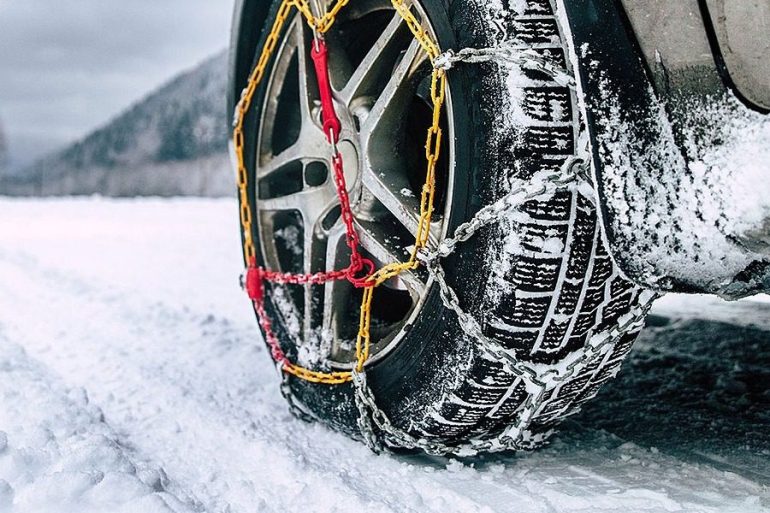The Elpis bad weather sweeps many areas of Greece, but also Attica, with heavy snowfalls that put the traffic of vehicles on the ice, while the use of anti-skid chains on most roads is necessary.
However, a large portion of drivers ignore the instructions for their correct placement, which makes their efforts difficult at difficult times.
How to put the anti-skid chains correctly and easily
Some models of chains with a small cross section (7-8 mm) can be mounted on cars with 17 ”+ wheels, provided you use an elastic tension belt (eg Thule CK7). These systems are not listed by car manufacturers, so only the chain manufacturer can advise you on compatibility with your car. Alternatively, there are systems with belts, ie transverse metal elements that catch on the cables, but their efficiency is not the same as that of classic chains, even with a small cross-section loop.
Fabric "chains"
Otherwise non-slip "blankets". These are non-slip covers that cover the wheel and their price ranges from 50 to 100 euros. Their thin thickness allows them to be installed in most cars. This special cloth on the adhesive surface is like it has scales. Some brands try to improve traction with additional bumps, without significant results. Finally, their endurance on the dry road is low (only 10-15 km). Only the Michelin system differs with a film in the rolling belt that dramatically improves traction in the snow. In addition, it is "armed" with steel panels for ice efficiency.
Installing fabric chains is easy and fast. Be careful though! The centering must be perfect so that they do not disassemble and get caught in a mechanical part, in which case they will be torn. Other disadvantages are the resistance to dry asphalt (15 to 50 km) and that they are not always accepted by the Traffic Police, if an order has been issued for "mandatory anti-skid chains".
Wear the fabric "chains" in three steps:
Cover the free surface of the rubber with the blanket, taking care that the inner tightening rubber does not get caught in a mechanical part
Push the car forward or backward to cover the part of the wheel that was on the road.
Center the fabric chain on the wheel with the help of the straps.
The system is automatically centered by scrolling. Stop after 100 m and check the installation.
Spikes Spider
Whatever the model, it does not cover the inside of the tire. So there is no fear of contact with a mechanical component. The Compact type is a kind of plastic spider with nails that hugs the rubber. The traction in the snow is relatively small, as the tire spins inside. The Sport version has chains on the scroll surface.
Traction is significantly better, but rolling noise is higher. Easy to install, the set locks on a base that is pre-mounted in the center of the wheel. Disadvantages include the prohibitive price (about 300 euros per chain) and the space they occupy in the trunk (they do not fold).
Caterpillars
Like the previous one, this type covers only the scroll surface. Traction is high on ice, but the noise of rolling on a dry road is annoying. There is no additional base here, but the tracks are caught on a wheel bolt. Although the full application in place is done almost automatically, it would be good after 100 m to check that they "caught". Here, too, the price is high (300 euros), with the only difference being that the tracks fit in a special bag and take up less space in the trunk.
